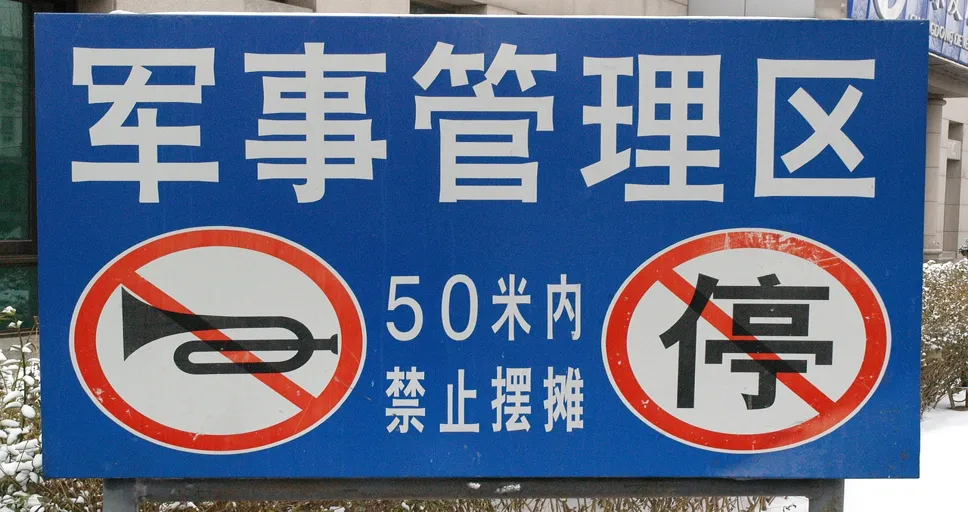Contents
- 1 What Happens When You Stop Chasing An Avoidant: The Initial Impact of Stopping the Chase
- 2 Changes in Communication Patterns
- 3 Emotional Responses from Both Sides
- 4 Long-Term Effects on Relationship Dynamics
- 5 Personal Growth and Self-Discovery
- 6 Rebalancing the Power in the Relationship
- 7 Moving Forward: Next Steps and Considerations
- 8 Frequently Asked Questions
- 8.1 What happens when you give an avoidant the silent treatment?
- 8.2 What to say when an avoidant goes silent?
- 8.3 What happens when you avoid the avoidant?
- 8.4 What to do when an avoidant partner goes silent?
- 8.5 What happens if you ignore an avoidant?
- 8.6 Do avoidants expect you to chase them?
- 8.7 How to respond when an avoidant pulls away?
- 8.8 What to do when an avoidant pushes you away?
- 8.9 What hurts an avoidant?
- 8.10 What happens if you don’t chase an avoidant?
- 8.11 What to do when an avoidant deactivates?
- 9 Conclusion
- 10 Recommended Authors For Further Reading
Exploring what happens when you stop chasing an avoidant can be a profound turning point in any relationship. This act not only shifts the dynamics but also opens a path to deeper self-understanding and emotional maturity. Often, the pursuit of someone who is emotionally unavailable involves a complex interplay of desire for closeness and the pain of rejection. When you cease this chase, it inadvertently sets the stage for personal growth and can alter how both partners view the relationship. As we delve deeper into this topic, we will explore the immediate effects, the change in communication patterns, and the long-term implications for both individuals involved. By understanding these aspects, one can better navigate the emotional landscape of their relationships and foster a healthier, more balanced connection.
- Recognize the Shift: Stopping the chase changes the relationship dynamics and fosters personal growth.
- Emotional Impact: The pursuer may feel anxiety and emptiness initially, prompting self-reflection and adjustment.
- Avoidant’s Response: The avoidant might feel relieved and could start confronting their own feelings, potentially leading to closer interactions.
- Communication Changes: Reduced chasing pressure can improve openness and honesty in communication. This might lead to more meaningful exchanges and better understanding between partners.
- Mutual Adjustment: Both partners need to adapt to the new dynamics, which involves recalibrating expectations and behaviors to sustain improvements and deepen the relationship.
What Happens When You Stop Chasing An Avoidant: The Initial Impact of Stopping the Chase
Discovering what happens when you stop chasing an avoidant partner can be both enlightening and challenging. Initially, this change in behavior might create a palpable shift in the dynamics of the relationship. The one who has been persistently pursuing may experience a sudden sense of relief mixed with uncertainty. This pivotal moment is often the first step toward understanding the complex interplay between attachment styles in a relationship.
The Immediate Emotional Impact
The immediate reaction to ceasing the chase can vary widely between individuals. For the pursuer, feelings of anxiety and emptiness may surface as they confront the silence or lack of engagement from their partner. This initial phase is critical as it sets the tone for personal introspection and adjustment. It’s a time when the pursuer might begin to question their own needs and desires, evaluating why the chase was so vital to their sense of relationship security.
Shifts in the Avoidant Partner’s Behavior
On the flip side, the avoidant partner may react in unexpected ways. Without the constant pressure of being pursued, they might feel a temporary boost in relief or independence. However, this newfound space can also lead them to confront their own feelings towards the relationship. In some cases, the reduction of pressure allows the avoidant partner to move closer, feeling safer and less overwhelmed by intimacy.
Psychological Reactions
Both partners are likely to go through a range of psychological reactions during this adjustment period. The one who stops chasing might struggle with self-doubt and vulnerability as they recalibrate their approach to love and connection. Conversely, the avoidant individual may start to recognize the value of their partner’s presence when not feeling chased, potentially leading to a more balanced interaction between the two.
Observing Changes
As both partners navigate through these initial changes, it’s important for them to observe and reflect on their behaviors and emotions. The pursuit of personal growth and a better understanding of their relational patterns can facilitate a healthier approach to their interactions moving forward.
Understanding these initial impacts when you stop chasing an avoidant is crucial for both partners as they begin to redefine their relationship. The journey may be fraught with emotional hurdles, but it also opens up opportunities for a more authentic and mutually satisfying connection.
Changes in Communication Patterns
Understanding what happens when you stop chasing an avoidant involves recognizing significant shifts in how both partners communicate. This transition can markedly affect the dialogue between you and your partner, leading to new dynamics that foster a healthier exchange of thoughts and emotions.
Reduced Pressure and Enhanced Honesty
The first noticeable change is often a reduction in the pressure that the avoidant partner feels. Without the constant pursuit, they might find it easier to express themselves honestly and openly. This decrease in pressure can lead to more authentic conversations, as the avoidant partner may no longer feel the need to withdraw or hide their true feelings to manage the relationship’s intensity.
Increase in Initiative
Another key development is the potential increase in the avoidant partner’s willingness to initiate communication. Previously, their interactions may have been reactive—primarily responses to the chaser’s attempts at conversation. When the dynamic shifts, the avoidant partner might start to reach out more frequently, showing an interest in contributing to the relationship’s dialogue, which can be a significant step towards deepening the connection.
Quality Over Quantity
As the relationship evolves with these new communication patterns, both partners often discover that the quality of their interactions improves. Conversations may become more meaningful, focused not just on everyday happenings but on deeper emotional states and shared plans for the future. This change can help both partners feel more connected and understood, reducing misunderstandings and conflicts.
New Communication Challenges
While these changes can be positive, they also come with new challenges. For instance, the person who used to chase may struggle with their expectations of how often and how deeply the avoidant partner should now be communicating. There may be periods of adjustment where each partner has to recalibrate their expectations and learn to navigate the less familiar, more balanced landscape of their interactions.
Self-Reflection and Adjustment
Both partners are likely to engage in more self-reflection during this period. For the former chaser, this might mean learning to hold back and allow space for the other to come forward. For the avoidant partner, there’s an opportunity to explore how they can be present in the relationship without feeling overwhelmed. This mutual adjustment is crucial for sustaining improvements in communication.
These changes in communication patterns are essential to consider when examining what happens when you stop chasing an avoidant. They reflect a shift towards a more balanced relationship where both partners can feel more at ease and valued. As these new ways of interacting become more entrenched, the foundation for a stronger, more resilient relationship is laid, paving the way for further growth and understanding between partners.
Emotional Responses from Both Sides

When you explore what happens when you stop chasing an avoidant, one of the most significant areas to consider is the emotional responses that both partners experience. This shift can stir a wide range of feelings, from relief and confusion to fear and hope, marking a critical point in the relationship’s evolution.
The Chaser’s Emotional Shift
For the partner who has stopped chasing, the initial emotional response might be a mix of relief and anxiety. Relief comes from no longer engaging in an exhausting pursuit that often feels one-sided. However, this relief is typically accompanied by anxiety about the future of the relationship and the potential for increased distance without their active pursuit. There’s often a profound sense of vulnerability as this partner adjusts to a new way of relating that doesn’t involve constantly seeking affirmation and closeness.
The Avoidant Partner’s Reactions
The avoidant partner, on the other hand, might initially feel a sense of freedom. The pressure of constant attention and expectation is alleviated, which can lead to feelings of relief. However, this relief can quickly turn into confusion or guilt as they notice the change in dynamics and perhaps realize their partner’s distress. This newfound space forces them to confront their own feelings towards the relationship and can lead to a deeper self-reflection about their habitual withdrawal and its implications.
Emergence of New Feelings
As the new dynamics settle, both partners may start to experience a range of new emotions. The chaser might find themselves feeling more empowered and less anxious over time, as they learn to focus more on their own needs and less on the avoidant’s responses. Conversely, the avoidant partner might begin to feel safer and more interested in connecting on a deeper level, now that the relationship feels less overwhelming.
Potential for Resentment
It’s crucial to acknowledge that stopping the chase doesn’t immediately resolve all emotional challenges. Resentment can surface, especially if the chaser feels that their efforts were unappreciated or if the avoidant feels pressured to change their ways too quickly. These emotions are natural and need to be addressed openly and compassionately for the relationship to move forward healthily.
Navigating this new emotional landscape requires patience and a willingness to understand and adapt to each other’s emotional needs. Both partners need to communicate their feelings without falling back into old patterns of pursuit and withdrawal. This period can be a powerful opportunity for emotional growth, as each partner learns to balance their own needs with those of their partner.
In examining what happens when you stop chasing an avoidant, it becomes clear that the emotional responses from both sides play a crucial role in determining the future of the relationship. These responses are not just reactions to the change but are also stepping stones to a more balanced and fulfilling partnership.
Long-Term Effects on Relationship Dynamics
When we explore what happens when you stop chasing an avoidant, it’s essential to consider the long-term effects on the relationship dynamics. These changes can profoundly influence both partners’ interaction patterns, emotional health, and overall relationship satisfaction.
Development of Mutual Respect
One of the most significant long-term effects is the development of mutual respect. When the chase ends, the dynamic often shifts from one of dependency and frustration to one of mutual respect and understanding. The avoidant partner may begin to appreciate the space they are given and reciprocate with more openness and engagement. Conversely, the chasing partner often gains respect for themselves and their needs, realizing that they deserve a relationship where their efforts are matched.
Enhanced Communication and Trust
Stopping the chase can lead to enhanced communication and trust over time. Both partners are likely to feel less pressure, which can make it easier to share thoughts and feelings honestly. This openness can foster deeper trust between partners, as each sees that their vulnerabilities are handled with care and understanding. Moreover, as communication improves, misunderstandings and conflicts can decrease, making the relationship more stable and satisfying.
Shift in Power Balance
Another crucial long-term effect is the shift in the power balance within the relationship. Traditionally, the person who chases may feel powerless and at the mercy of the avoidant partner’s willingness to engage. When the chasing stops, this imbalance can begin to correct itself. Both partners may feel more on equal footing, with neither having to dominate or retreat in the relationship. This balance allows both individuals to feel more in control of their emotional lives and the relationship as a whole.
Increased Individual Independence
A significant benefit of ending the chase is the increased independence each partner experiences. The former chaser often discovers more time and energy to invest in their interests and personal growth, which can lead to increased self-esteem and happiness. For the avoidant partner, having space can help them understand their own attachment patterns and work towards being more present in the relationship without feeling overwhelmed.
Potential Challenges and Growth
While the long-term effects can be overwhelmingly positive, they also come with challenges. Both partners must be willing to face and work through issues that arise from new dynamics. For instance, the avoidant partner may struggle with the increased expectations for engagement, and the former chaser might find it difficult to adjust to a more passive role. However, these challenges also provide opportunities for growth and deeper understanding between partners.
Understanding the long-term effects on relationship dynamics when you stop chasing an avoidant reveals a complex but potentially rewarding transformation. Both partners can achieve a healthier, more balanced relationship if they navigate these changes thoughtfully and intentionally, using the new dynamics to foster respect, trust, and mutual satisfaction.
Personal Growth and Self-Discovery

Delving into what happens when you stop chasing an avoidant opens up profound avenues for personal growth and self-discovery. This transformative journey reshapes not only how individuals interact within the relationship but also how they perceive themselves and their emotional needs.
Increased Self-Awareness
One of the most immediate impacts of stopping the chase is an increase in self-awareness. Individuals who once focused heavily on the needs and responses of their avoidant partner begin to turn their attention inward. This shift allows them to better understand their own patterns in relationships, particularly why they felt compelled to pursue someone who maintains emotional distance. Such insights can lead to significant emotional growth and a reassessment of one’s needs and expectations in relationships.
Discovery of Self-Sufficiency
In the absence of the chase, both partners, particularly the one who was pursuing, often discover a newfound sense of self-sufficiency. This discovery is crucial for personal empowerment. Realizing that one’s happiness and emotional stability do not have to be contingent upon another’s proximity or approval can be liberating. It can also encourage the development of interests and activities outside the relationship, which further contributes to an individual’s sense of self and personal fulfillment.
Development of Emotional Resilience
Stopping the chase necessitates navigating a range of emotions, from initial discomfort and loneliness to eventual acceptance and peace. This journey fosters emotional resilience as individuals learn to cope with uncertainty and emotional pain without reverting to old patterns of behavior. The process of facing and overcoming these emotional challenges strengthens one’s ability to handle future relationship dynamics more effectively.
Enhanced Capacity for Introspection
The process also enhances one’s capacity for introspection. It encourages individuals to question deeper issues, such as their reasons for attraction to avoidant types and their responses to emotional withdrawal. Understanding these dynamics can pave the way for healthier relationship choices in the future. It also promotes a better understanding of how to establish boundaries and communicate needs effectively.
Realignment of Relationship Expectations
Finally, what happens when you stop chasing an avoidant often leads to a realignment of relationship expectations. This realignment is about recognizing and advocating for a relationship that provides mutual respect, support, and satisfaction. It involves understanding that while compromise is part of any relationship, sacrificing one’s needs consistently for the comfort of another is unsustainable.
As individuals embark on this journey of personal growth and self-discovery, they often find that stopping the chase is not just about altering a single relationship dynamic but about transforming their approach to all relationships. This profound insight ensures that their future relationships are healthier and more balanced, reflecting a deepened understanding of themselves and their emotional needs.
Rebalancing the Power in the Relationship
Rebalancing the power within a relationship is one of the most crucial outcomes when examining what happens when you stop chasing an avoidant partner. This shift can profoundly influence the dynamics between partners, fostering a more equal and respectful connection.
Redefining Roles
Historically, in relationships where one partner persistently chases an avoidant, there tends to be a clear power imbalance. The chaser often feels powerless, continually seeking approval and affection, while the avoidant holds significant control over the relationship’s emotional climate. Stopping the chase initiates a crucial role redefinition. It allows the former chaser to step back and assess their worth and contributions to the relationship, often leading them to demand a more balanced exchange of emotional labor and affection.
Encouraging Mutual Engagement
Once the dynamic of the chase dissipates, the avoidant partner might find themselves in a new position where they are encouraged to participate more actively in maintaining the relationship. This involvement can help redistribute the relationship’s power, as both partners begin to view their roles as equally vital to the relationship’s health and longevity. This mutual engagement helps in reducing feelings of resentment and increases satisfaction for both individuals.
Establishing Healthier Boundaries
A key aspect of rebalancing power is the establishment of healthier boundaries. The person who stops chasing often gains insight into the importance of setting limits on their emotional investment and availability. By doing so, they protect their self-esteem and promote a relationship dynamic that respects individual spaces and needs. For the avoidant partner, having clear boundaries can also be beneficial as it reduces the pressure they might feel to respond in ways that are contrary to their natural inclinations, allowing them to engage more authentically.
Promoting Reciprocity
An essential element of the new power balance is the promotion of reciprocity. This concept doesn’t necessarily mean equal actions but rather the equal value each partner brings to the relationship. It emphasizes the importance of both giving and receiving support, affection, and understanding, ensuring that one partner does not consistently feel like the lesser or overextended party.
Impact on Long-Term Relationship Stability
The long-term stability of the relationship can significantly benefit from this rebalancing. When power is more equally distributed, both partners are likely to feel more secure and valued. This security can lead to greater emotional intimacy and a stronger commitment to nurturing the relationship. Furthermore, a balanced power dynamic reduces the likelihood of conflicts that arise from feelings of inequality or neglect.
Understanding and addressing the power dynamics within a relationship when you stop chasing an avoidant is crucial. It not only helps in fostering a more equitable and satisfying relationship but also ensures that both partners can thrive individually and together. This balanced power dynamic is fundamental for the relationship’s health and the emotional well-being of both individuals involved.
Moving Forward: Next Steps and Considerations

As we explore what happens when you stop chasing an avoidant, it becomes essential to consider the next steps and considerations for moving forward in such a transformed relationship. This stage is crucial for ensuring that the changes lead to a healthier, more sustainable partnership.
Continued Self-Evaluation
The first step in moving forward is continued self-evaluation. Both partners should regularly assess their feelings, boundaries, and satisfaction levels within the relationship. This ongoing introspection helps maintain the gains made from stopping the chase and ensures that old patterns do not resurface. It’s particularly important for the former chaser to remain vigilant against the urge to revert to previous behaviors that may compromise their newfound sense of self-worth and independence.
Open and Honest Communication
Maintaining open and honest communication is key to navigating the new dynamics effectively. Both partners need to feel safe in expressing their needs, desires, and concerns without fear of judgment or withdrawal. Regular check-ins can be a helpful tool, allowing each person to voice their thoughts on the relationship’s progress and areas needing attention.
Seeking Professional Guidance
For many couples, professional guidance from a therapist or counselor can be invaluable as they adjust to the new relationship dynamics. A professional can offer unbiased advice and strategies to help both partners understand and process their emotions, communicate more effectively, and strengthen their emotional connection.
Setting Realistic Expectations
Another vital consideration is setting realistic expectations about the relationship’s progress. Change is often gradual and can come with setbacks. Acknowledging this can help both partners remain patient and committed to the process. It’s important to celebrate small victories along the way, which can motivate both partners to continue working on the relationship.
Planning for the Future
Finally, planning for the future together can reinforce the commitment to a balanced and fulfilling relationship. This might involve setting shared goals or discussing long-term aspirations, which can help both partners feel more connected and invested in the relationship. These plans should align with the values and needs of both individuals, ensuring that each partner feels equally valued and heard.
As both partners work through what happens when you stop chasing an avoidant, these next steps and considerations play a crucial role in building a stable, loving, and respectful relationship. Moving forward, it’s essential to nurture the growth and changes that have occurred, ensuring that the relationship continues to evolve in a healthy direction.
- Ceasing pursuit of an avoidant can deeply transform relationship dynamics, fostering personal growth and emotional maturity.
- Stopping the chase allows both partners to explore their own emotional needs and desires, often leading to healthier interactions.
- The initial reaction can vary, with pursuers facing anxiety and emptiness, while avoidants may experience relief and a safer feeling towards intimacy.
- Changes in communication patterns emerge, potentially increasing honesty and initiative from the avoidant partner, enhancing the relationship’s quality.
- The adjustment phase is crucial for both partners to recalibrate their approaches and expectations, leading to a more balanced and satisfying relationship.
Frequently Asked Questions
What happens when you give an avoidant the silent treatment?
Giving an avoidant the silent treatment can reinforce their withdrawal behaviors, potentially leading to increased distance as they may feel justified in their need to pull away.
What to say when an avoidant goes silent?
When an avoidant goes silent, it’s helpful to express understanding and patience. Saying something like, “I’m here when you’re ready to talk,” can make them feel less pressured.
What happens when you avoid the avoidant?
Avoiding an avoidant can lead to a cycle of mutual withdrawal, making reconnection more challenging as both parties may feel disconnected or misunderstood.
What to do when an avoidant partner goes silent?
Give them space while gently reminding them of your support. Communicating that you are available to listen when they are ready to share can be reassuring.
What happens if you ignore an avoidant?
Ignoring an avoidant may exacerbate their withdrawal and could lead to a deeper chasm in the relationship, as it might signal to them that their needs are being overlooked.
Do avoidants expect you to chase them?
Some avoidants might subconsciously hope to be pursued as a way to confirm they are valued, despite their outward behavior suggesting they prefer distance.
How to respond when an avoidant pulls away?
Respond by maintaining a calm and supportive presence, acknowledging their need for space but expressing your readiness to connect whenever they feel comfortable.
What to do when an avoidant pushes you away?
Respect their need for space, but keep communication open and non-confrontational. Let them know you understand their feelings and are ready to support them.
What hurts an avoidant?
Criticism, perceived neglect, and overwhelming emotional demands can hurt an avoidant, as these can trigger their fears of inadequacy or engulfment.
What happens if you don’t chase an avoidant?
Not chasing an avoidant might lead them to either reconsider their approach and seek reconnection, or it could confirm their belief that distance is necessary for their emotional safety.
What to do when an avoidant deactivates?
Stay supportive and avoid taking their deactivation personally. Offer them assurance of your care and patience, helping them feel safe to eventually reopen communication.
Conclusion

In conclusion, understanding what happens when you stop chasing an avoidant can be transformative for both partners in a relationship. This journey not only reshapes the dynamics between the chaser and the avoidant but also fosters significant personal growth and emotional maturity. By ceasing the chase, both individuals are given the opportunity to explore deeper aspects of themselves and their relationship, leading to a more balanced and fulfilling partnership.
The shifts that occur when one stops chasing can initially be challenging, yet they are profoundly beneficial in the long run. These changes include improved communication, a better understanding of personal needs and boundaries, and a healthier power dynamic. Each step away from the pursuit leads to a more authentic connection, where both partners can express their needs and desires without fear or reservation.
Moreover, this process highlights the importance of self-awareness and mutual respect in any relationship. It teaches both partners to value their individuality and the unique contributions they each bring to their union. The chaser learns the importance of self-respect and the value of their emotional well-being, while the avoidant is encouraged to engage more openly and sincerely.
As we reflect on what happens when you stop chasing an avoidant, it becomes clear that such a decision is not just about altering a single relationship dynamic but about embracing a healthier approach to love and intimacy. This insight is crucial for anyone looking to foster a truly equal and responsive relationship, making it a journey worth undertaking for those struggling with unbalanced love dynamics. The lessons learned here are not only applicable to romantic relationships but to all forms of interpersonal relationships, emphasizing the universal value of respect, communication, and personal integrity.
Recommended Authors For Further Reading
- Amir Levine – Levine is a psychiatrist and neuroscientist known for co-authoring “Attached: The New Science of Adult Attachment and How It Can Help You Find – and Keep – Love,” which explores different attachment styles, including avoidant attachment.
- Rachel Heller – Co-author with Amir Levine on “Attached,” Heller’s work helps readers understand the dynamics of relationships influenced by attachment theory, crucial for comprehending interactions with an avoidant partner.
- John Bowlby – As the father of attachment theory, Bowlby’s extensive research on attachment and loss provides foundational insights into the behavior of individuals who exhibit avoidant attachment styles.
- Mary Ainsworth – Ainsworth, a developmental psychologist, significantly contributed to attachment theory with her work on the “Strange Situation” assessment, which helps in understanding how different attachment styles manifest in relationships.
- Sue Johnson – Johnson is a clinical psychologist known for developing Emotionally Focused Therapy (EFT), which is highly effective in dealing with issues in relationships, including those involving avoidant partners.


